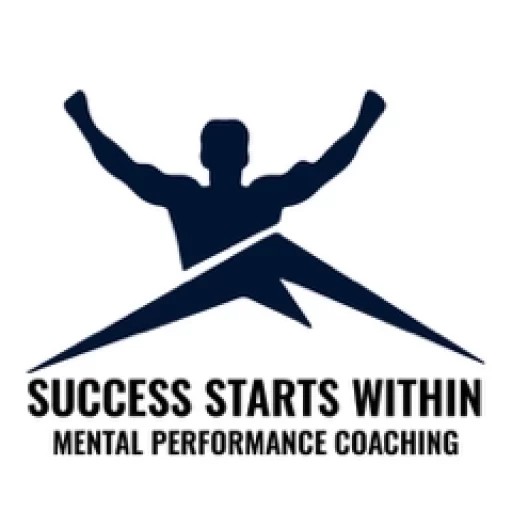In this article, I’m going to go over the best motivation to have as an athlete and how you can use motivation to build a strong mindset in sports.
Hey there, I’m Eli Straw, a mental performance coach who works with athletes from around the world on building a stronger mental game.
Motivation gives us that drive to train hard, to give effort during games, and to bounce back from setbacks and rebound from bad games. Because of this, it’s important to your mental game to have strong control over your motivation.
Intrinsic vs. Extrinsic Motivation
The two most common types of motivation we can have are intrinsic motivation and extrinsic motivation.
-
Intrinsic motivation means you are driven by the joy and simply the act of doing whatever it is that you’re doing.
-
Extrinsic motivation means you are driven by the achievement of something—like stats, winning the game, getting an award, or making it to the next level.
In sports terms:
-
Intrinsic motivation = joy and satisfaction from training and playing the game.
-
Extrinsic motivation = outcome-based goals, like recognition, competition results, or proving yourself.
Both types can be useful. In my work, I’ve seen athletes who are more intrinsically motivated and athletes who are more extrinsically motivated. What matters most is not which type you lean toward, but understanding which type works best for you.
Two Examples of Motivation in Action
-
Example 1: The Intrinsically Motivated Baseball Player
I worked with a baseball player who was driven by just practicing and playing the game. He loved going to the batting cage, working on ground ball drills, and simply playing.
When he focused too much on extrinsic motivators—stats, winning, moving up in the lineup, or making it to the next level—he experienced more anxiety and fear. By owning his intrinsic motivation, he performed best by focusing on the joy and satisfaction of playing. -
Example 2: The Extrinsically Motivated Basketball Player
On the other hand, I worked with a basketball player who was very extrinsically motivated. She enjoyed playing, but her real drive came from wanting to prove people wrong and scoring a certain number of points each game.
When she focused on this, she gave more effort during games and performed at her best.
In both cases, the key was that each athlete understood their motivation type and leaned into it.
Identifying What Truly Drives You
It’s not about one universal motivation that all athletes need—winning or enjoying the game. It’s about what personally motivates you and owning that.
To help you identify your motivation type, here are three questions to ask yourself:
-
Why do you play your sport?
-
Is it to impress others?
-
Is it because you love the act of playing?
-
Think about what gives you real satisfaction.
-
-
What distracts you when you play?
-
Maybe focusing on stats creates stress.
-
Maybe focusing too much on fun makes you lose focus.
-
Identifying distractions helps you rule out motivators that don’t serve you.
-
-
What pushes you through tough moments?
-
In workouts or games, what keeps you going when you want to stop?
-
What do you remind yourself of?
-
Once you’ve answered those, summarize everything into a simple motivation statement (why statement).
Examples of motivation statements:
-
“My why is to push myself and see how much I can improve and enjoy the game while I do so.”
-
“My why is to prove other people wrong and to win as much as possible.”
Write your own why statement and read it daily—especially before games—to get into the right mindset.
Using Outcome Goals to Stay Process-Focused
Outcome goals can distract us if we dwell on them too much, but they can also serve as powerful motivators.
Here’s the key:
-
Think about the outcome you want to achieve.
-
Then redirect your attention back onto the process.
For example: “I want to win this game. So what do I need to do, moment by moment, to give myself the best chance of winning?”
Outcome goals, when used this way, become motivators to help you stay present and focused on the process.
Turning Motivation Into Habits
Motivation is powerful, but it isn’t always consistent. Nobody feels motivated all the time.
That’s why once you’ve identified your motivation style and created your why statement, you must use motivation to build habits.
-
If you use your motivation to stick to a training plan, over time it becomes automatic.
-
If you use your motivation to focus on effort and the process during games, it will eventually become second nature.
That way, even on days when your motivation is low, your habits carry you through.
Final Thoughts
I hope this article helped you identify what your motivation style is as an athlete.
Remember:
-
Understand whether you’re more intrinsically or extrinsically motivated.
-
Craft your why statement.
-
Use outcome goals to drive focus onto the process.
-
And most importantly, turn motivation into habits so you stay consistent even when motivation fades.
If you’re interested in one-on-one mental performance coaching, please fill out the form below to learn more. Or you can click here to schedule a free introductory coaching call.
I’ve also created two online mental training courses for athletes:
And if you’re more of a reader, check out my books:
Thank you for reading and I wish you the best of success in all that you do.




